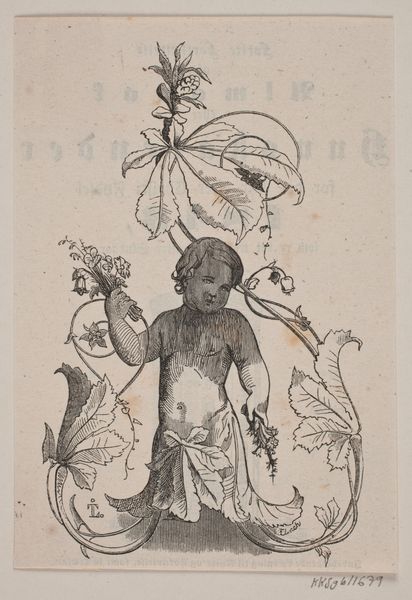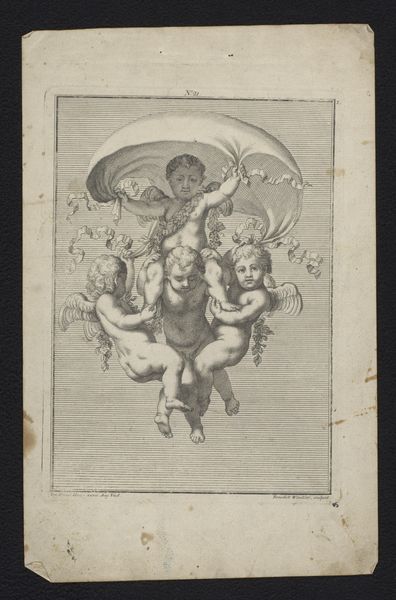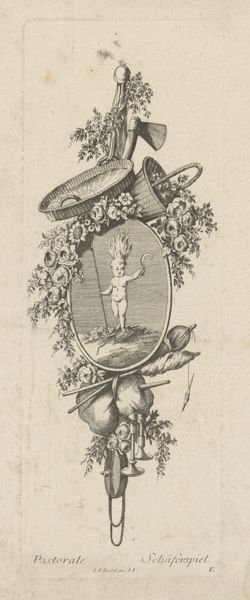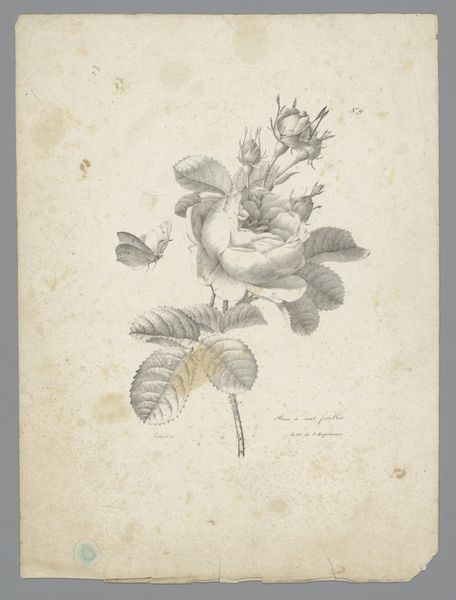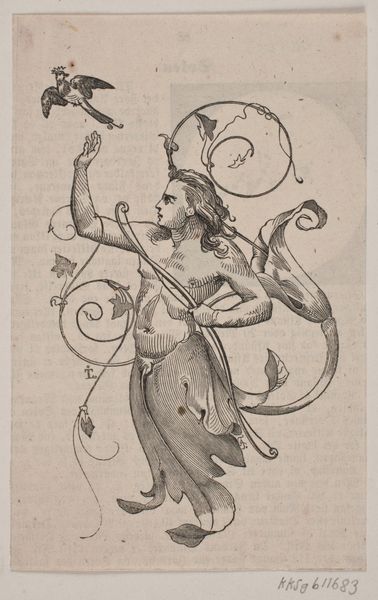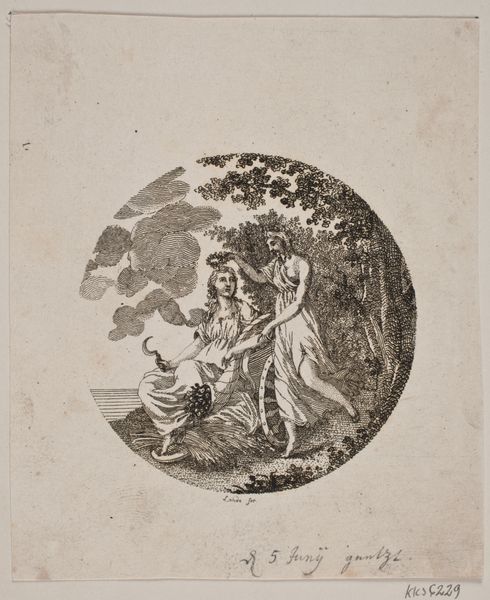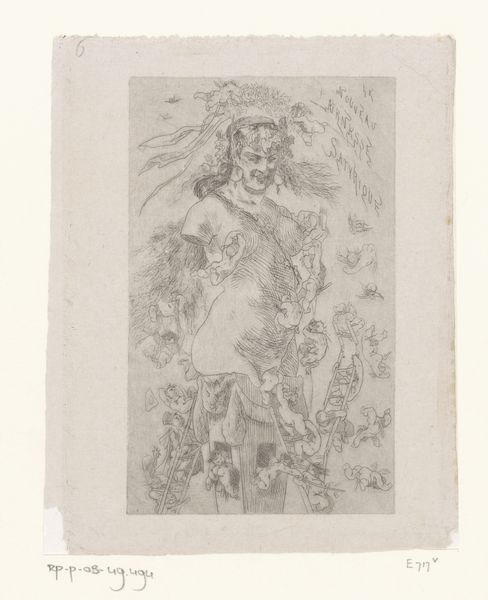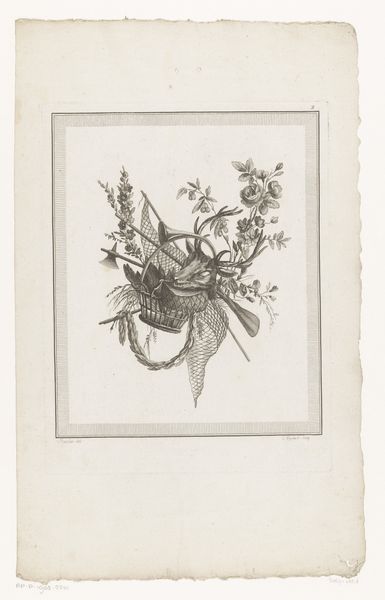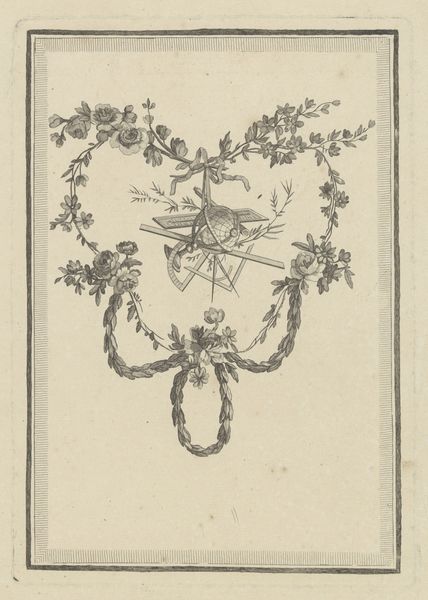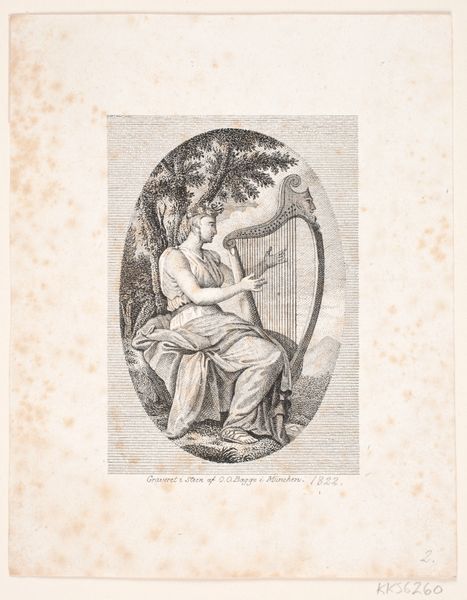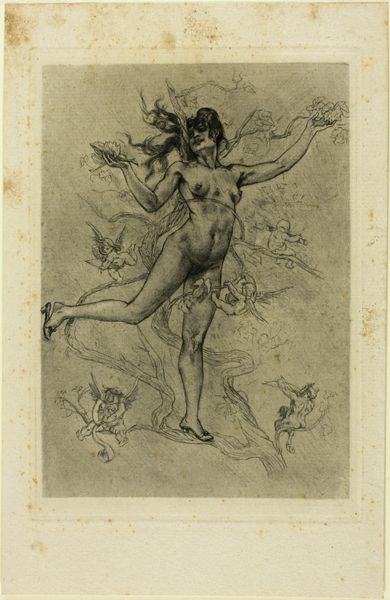
Dimensions: 161 mm (height) x 99 mm (width) (bladmaal)
Editor: So, this is "Genius med blomster i hændene" – "Genius with flowers in his hands" – created in 1843 by Andreas Flinch. It’s an ink woodcut, which is interesting. I’m immediately struck by how this image seems to celebrate both artistic genius and the arrival of spring. How would you interpret this work? Curator: I see this as an intriguing example of how 19th-century art intertwined with broader societal values and nascent national identity. The cherubic figure bearing flowers obviously symbolizes creative genius and rebirth. Given the rise of national romanticism during this period, consider how Flinch's image could resonate with the Danish public. Editor: How so? Curator: Think about it: this was a time when defining "Danishness" was a key political and cultural project. Could this image, with its blend of classical imagery and blossoming flora, be interpreted as a visualization of Denmark's cultural flourishing? The artist may have sought to connect national identity to this symbolism. What’s your take on the role of the artist here? Was Flinch just reflecting popular taste, or was he actively shaping it? Editor: That’s a great question. Maybe it was both? The flowers feel inherently…pure, maybe, but they are arranged and drawn, not random. He could be subtly elevating the natural world, and suggesting art as the force that makes this happen. It sounds plausible, since these artworks might be targeted at private Danish households, embedding this national identity. Curator: Precisely! And notice the woodcut medium. Its relative affordability would allow wider circulation of this imagery, thus engaging more of the public. A very political project masked behind a cute image. Editor: This reminds me how many layers are involved in this type of analysis and the amount of details you need to check in art. Curator: Indeed. Art always participates in wider societal dynamics, which in turn informs its production, circulation and public reception.
Comments
No comments
Be the first to comment and join the conversation on the ultimate creative platform.
